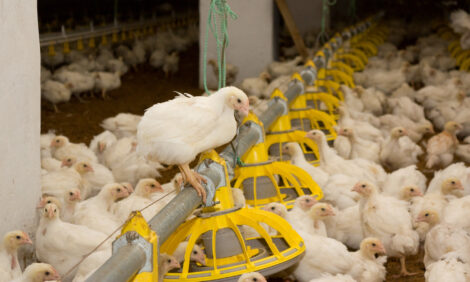



Effects of Different Vitamin E Sources and Levels on Rearing Performance of Slaughter Turkeys
A natural form of vitamin E (RRR-d-α-tocopherol) at half the inclusion level or the dl-α-tocopherol acetate level recommended in 2005 for turkeys were more effective in stimulating the antioxidant status of female turkeys than synthetic tocopherol acetate, according to new research from Poland.Reporting their work in Journal of Applied Poultry Research recently, Katarzyna Ognik of the University of Life Sciences in Lublin and T. Wertelecki of ETOS in Poznan describe their experiment with 600 turkey hens of the Big 6 line from one to 16 weeks of age.
The birds were assigned to one of five experimental groups. The factors differentiating the groups were the chemical form and level of a tocopherol (vitamin E) precursor administered as a feed additive – dl-α-tocopherol acetate-E 307, according to the European Union Register of Feed Additives.
The following five dietary treatments were used:
- group 1 (control): synthetic dl-α-tocopherol acetate at a dietary inclusion level of 50mg per kg (from one to nine weeks of age) and 45mg per kg (from 10 to 16 weeks of age), being close to the vitamin E level recommended for SPF (standards poultry feeding) turkey hens in 2005
- groups 2 and 3: the same form of vitamin E precursor (as in group 1) added to the diet but at two-fold (group 2) and three-fold (group 3) increased doses as compared with the control, and
- groups 4 and 5: a different form of supplemental vitamin E, natural RRR-d-α-tocopherol, at a two-fold lower dietary inclusion level (group 4) and a comparable level (group 5) compared with the control.
The turkey hens fed the synthetic dl-α-tocopherol acetate feed additive (group 2 and 3) had significantly higher performance than the control birds, yet were comparable with the groups fed the natural form of RRR-d-α-tocopherol additive (groups 4 and 5).
The birds receiving the natural form of RRR-d-α-tocopherol showed a higher dressing percentage and a lower abdominal fat level than the group with the highest dose of synthetic dl-α-tocopherol acetate.
It was found that the supplemental natural form of RRR-d-α-tocopherol applied at the two-fold lower dietary inclusion level or comparable with the dl-α-tocopherol acetate recommended in 2005 for SPF turkeys stimulated the antioxidant status of the body significantly better than the synthetic tocopherol acetate and, consequently, played a more efficient antioxidative role in the organism.
Reference
Ognik K. and T. Wertelecki. 2012. Effect of different vitamin E sources and levels on selected oxidative status indices in blood and tissues as well as on rearing performance of slaughter turkey hens. J. Appl. Poult. Res., 21(2):259-271. doi: 10.3382/japr.2011-00366
Further ReadingYou can view the full report (fee payable) by clicking here. |
July 2012









